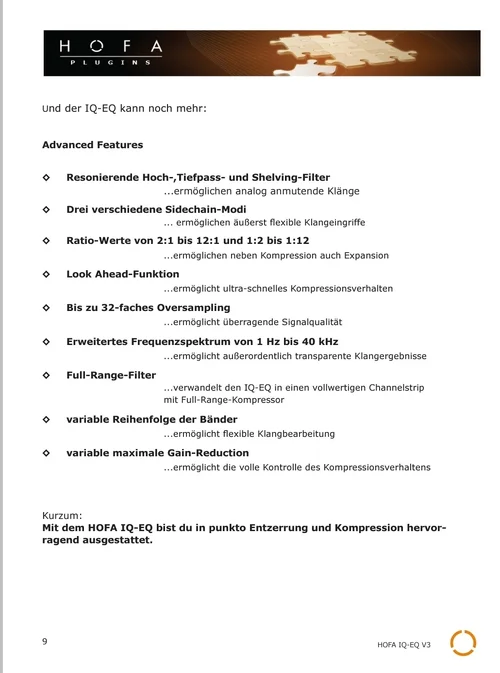Fand ich ganz gut anzuschauen, mal interessant so rein ITB zu sehen.
Kleines Nitpicking:
Bei dem einen EQ Plugin was er so viel verwendet und was ja ganz toll und kein Compressor ist....tja...das ist im Endeffekt ne bessere Art von Multiband Kompressor. Ich meine das Ding hat nen Threshold Regler. Komisch das er das nicht verstanden hat.
(Siehe Video ab 3:58)
Das würde ich nicht so sagen, denn trotz potentieller Überschneidungen ist eine "idealer" dynamischer EQ frei von klanglichen Eigenschaften in Bezug auf das Ansprechverhalten.
Viele PlugIns verbinden auch die Bedeinelemente beider Prozessorentypen was vielleicht dann etwas verwirrend sein kann.
Hier eine Erklärung der Unterschiede von Sonnox:
Multi-band dynamics vs. dynamic EQ
Multi-band compressors/expanders and dynamic EQs work in a similar way. They both split the input signal into multiple parallel paths. Each path is filtered to restrict its frequency range, then sent into a compressor or expander.
A dynamic EQ applies the gain reduction/expansion to the gain parameter of a parametric equaliser which processes the original input signal.
Multi-band compressor/expanders apply their gain reduction directly to each filtered signal, then combine them to reconstruct the original wide-band input signal.
This reconstruction approach has some downsides:
Static phase shift
When the band-limited signals are combined to reconstruct the input signal, a static phase shift is present at their cross-over point. The band-limiting can be achieved using linear-phase filters, however these incur high latency and can degrade transient response at lower frequencies.
Spectral shape
Multi-band processors typically afford less precise frequency adjustment than a parametric equaliser. If steeper filters are used to provide greater precision, phase shift at the crossover points increases.
Bands cannot overlap
Some multi-band processors get around the phase response issue, but are still left with a problem -- the bands cannot be overlapped! This can pose significant problems when a combination of gentle character modification and precise correction is required.
But Multi-band processors do have an advantage over most dynamic EQs. As a boost or cut increases, the width reduces. This is similar to the proportional Q response or gain / Q dependency of many well loved analogue EQ processors.
When using an EQ which does not have this gain / Q dependent response, gain changes often require Q changes to maintain the desired effect. Of course, this is highly undesirable if the gain is being modulated dynamically! See
Gain-Q Dependency for details.


